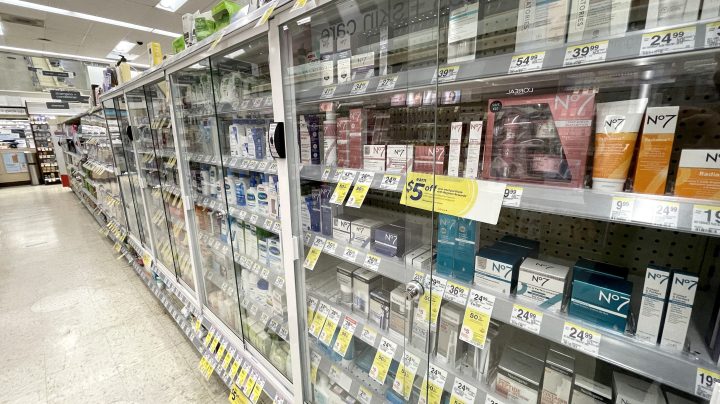
Retailers vexed by rising “shrink”

The National Retail Federation is out with its 2022 Retail Security Survey. And it says retail “shrink” — which includes problems like theft, gift card fraud and inventory mismanagement — accounted for nearly $95 billion worth of losses last year. That’s about $5 billion more than the year before.
Meanwhile, there’s been news that Target, Walgreens and other major retailers have closed some locations or shortened store hours because of thefts.
The kind of theft that’s mostly happening isn’t run-of-the-mill shoplifting. It’s organized crime, said Mark Mathews at the National Retail Federation.
“It ranges from, you know, incredibly sneaky to, you know, incredibly overt,” Mathews said.
Maybe you’ve seen stories about people running into stores and grabbing items in plain sight. Mathews said thieves are usually not so dramatic and much more calculated.
“They’re smart,” he said. “They’ll often steal just below the felony threshold. And they’re also aiming for certain types of products.”
Like denim, ink cartridges and teeth-whitening strips — items that are easy to pocket and have high resale value.
People coming into stores to steal accounts for close to 40% of retail shrink. Nearly 30% is theft by employees.
“It could be theft of product. It could be outright cash theft, credit card fraud, discount products fraudulently to friends,” said Karl Langhorst, who teaches retail asset protection at the University of Cincinnati.
There are plenty of ways retailers try to prevent theft: more security cameras, software that recognizes strange buying patterns, including at self-checkout.
Langhorst said the most effective method, though, is low-tech.
“Let’s say it’s a clothing store, and [a shopper has] a handful of blue jeans. ‘Can I hold those for you at the register until you’re ready to check out?'” he explained.
That tells thieves that employees are engaged, which also increases perceived safety for shoppers.
Read Hayes, who directs the Loss Prevention Research Council, said relying too much on security tags and locking up products can create a hostile shopping environment.
“The place can become a place that nobody wants to work, that very few want to shop in,” Hayes said.
When retailers stop selling certain products or close altogether, he said, the biggest losses are convenience for shoppers and jobs for the community.
There’s a lot happening in the world. Through it all, Marketplace is here for you.
You rely on Marketplace to break down the world’s events and tell you how it affects you in a fact-based, approachable way. We rely on your financial support to keep making that possible.
Your donation today powers the independent journalism that you rely on. For just $5/month, you can help sustain Marketplace so we can keep reporting on the things that matter to you.











